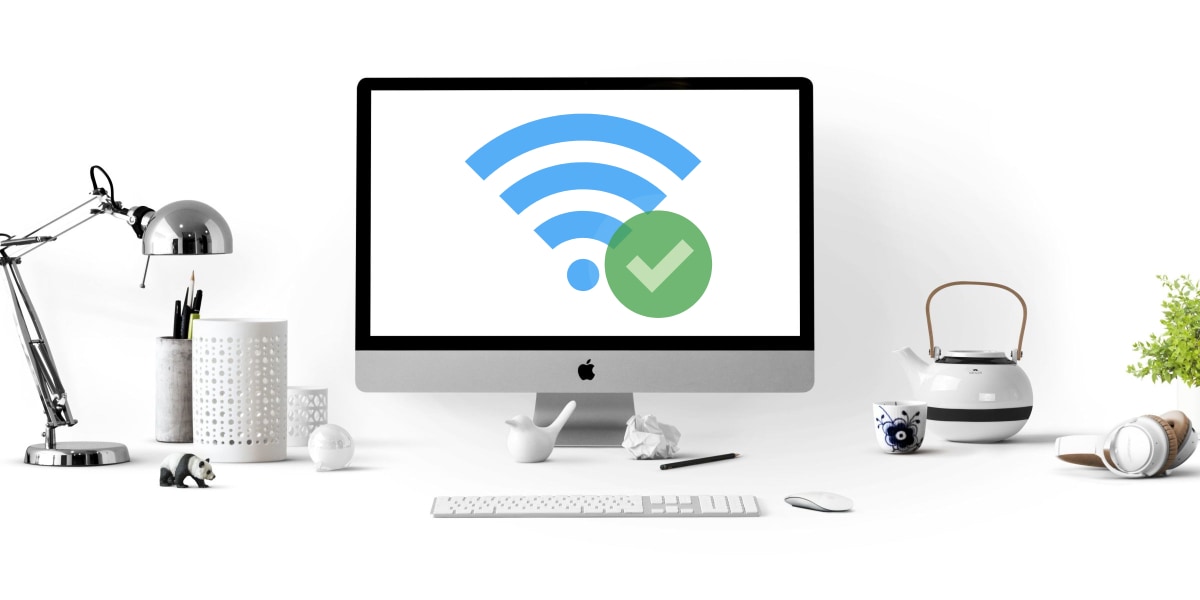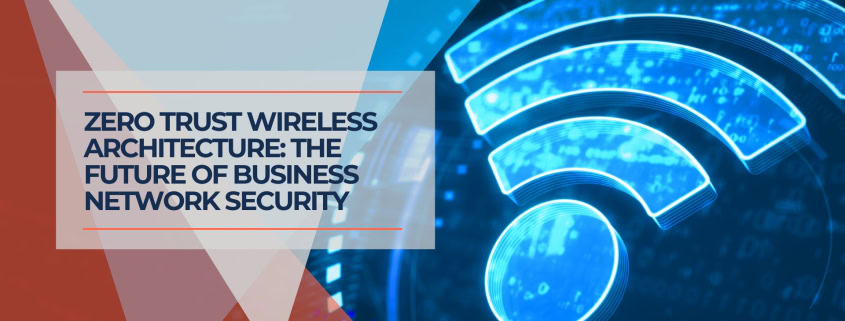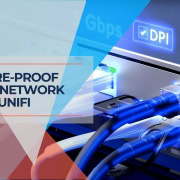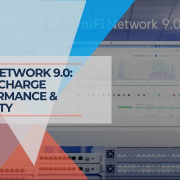Enterprise Wireless Security Guide 2025: Modern Strategies for Business Wi-Fi Protection
Wireless security has evolved significantly beyond basic password protection and network hiding. Today's business wireless networks require comprehensive security strategies that address new standards like Wi-Fi 6E and WPA3, accommodate growing numbers of IoT devices, and support distributed workforces while maintaining regulatory compliance.
Table of Contents
- 1 Current Wireless Security Landscape
- 2 Wi-Fi 6E, Wi-Fi 7, and Enhanced Security Standards
- 3 Zero Trust Wireless Architecture
- 4 Enterprise Wireless Management
- 5 IoT Device Integration and Security
- 6 Compliance and Industry Requirements
- 7 Remote Work and BYOD Integration
- 8 Professional Implementation Services
- 9 Technology Evolution and Future Planning
- 10 Building Effective Wireless Security Programs
- 11 Business Continuity Planning
- 12 Investment Planning and ROI
- 13 Conclusion: Strategic Wireless Security Implementation
Current Wireless Security Landscape
Modern wireless security addresses threats that have evolved alongside technological advances. Understanding these challenges helps businesses develop appropriate protection strategies that balance security requirements with operational needs.
Rogue Access Point and Evil Twin Concerns
Unauthorized access points continue to present challenges for business networks. Evil twin attacks involve creating fake access points that appear identical to legitimate networks, potentially capturing credentials or monitoring communications when users connect unknowingly.
These attacks have become more refined, with attackers able to replicate network names, use stronger signal strength, and create convincing login portals. The challenge increases in environments supporting remote work, where employees regularly connect to various networks outside the office environment.
Detection requires continuous monitoring of wireless spectrum and automated systems that can identify unauthorized access points based on signal characteristics, network behavior, and configuration anomalies.
IoT Device Security Considerations
The growing number of connected devices in business environments creates new security considerations. IoT devices, including security cameras, environmental controls, and access systems, often ship with default credentials and may have limited security update mechanisms.
Modern businesses increasingly rely on wireless security systems and surveillance equipment that require careful integration with enterprise networks. Professional security camera installation ensures these devices are properly configured and segmented to maintain security while preserving functionality.
These devices typically operate on dedicated network segments but maintain connectivity that requires ongoing security management. Effective IoT security includes device inventory management, regular firmware updates, and network monitoring to identify unusual communication patterns.
Advanced Threat Considerations
Nation-state actors and organized cybercriminal groups increasingly include wireless infrastructure in their attack strategies. These approaches often involve extended reconnaissance periods, including physical proximity attacks or long-term network monitoring.
These threats require businesses to implement comprehensive wireless monitoring, maintain detailed audit logs, and develop incident response procedures that account for wireless-specific attack vectors and evidence collection requirements.

Wi-Fi 6E, Wi-Fi 7, and Enhanced Security Standards
Recent wireless standards introduce performance improvements and new security requirements affecting business network planning and device compatibility strategies.
Wi-Fi 6E and 6 GHz Requirements
Wi-Fi 6E provides access to 6 GHz spectrum with mandatory WPA3 or Enhanced Open (OWE) security requirements. This represents a shift from previous standards where legacy security protocols remained acceptable for backward compatibility.
The 6 GHz band offers additional spectrum with reduced congestion, providing better performance and improved signal isolation. However, the security requirements mean businesses must verify that all connecting devices support modern authentication methods.
WPA3 Implementation Approaches
WPA3 provides three operational modes designed for different business requirements: WPA3-Personal for smaller organizations, WPA3-Enterprise for corporate environments, and WPA3-Enterprise 192-bit for high-security applications in government, defense, and financial sectors.
The Wi-Fi Alliance provides comprehensive certification guidelines and technical specifications for WPA3 implementation, ensuring compatibility and security compliance across different vendor solutions.
WPA3-Enterprise Capabilities:
- Protected Management Frames reducing deauthentication attack effectiveness
- Simultaneous Authentication of Equals improving password-based security
- Enhanced encryption options including 192-bit security modes
- Transition modes supporting mixed WPA2/WPA3 environments
- 802.1X/EAP compatibility maintaining existing authentication infrastructure
WPA3-Enterprise maintains compatibility with existing 802.1X authentication systems while adding security enhancements. Transition modes allow gradual implementation without requiring immediate replacement of legacy devices.
Wi-Fi 7 Security Requirements
Wi-Fi 7 (802.11be) establishes stricter security baselines, requiring WPA3 across all frequency bands and eliminating support for legacy WEP and WPA protocols. The standard specifies security configurations including beacon protection, enhanced encryption, and mandatory management frame protection.
These requirements ensure Wi-Fi 7 networks provide enterprise-grade security by default, though they require careful planning for device compatibility and authentication infrastructure before deployment.
Zero Trust Wireless Architecture
Modern wireless security assumes that wireless communications are potentially compromised and implements verification controls for every device, user, and communication attempt regardless of network location or previous authentication status.
Device Authentication and Verification
Zero-trust wireless architecture requires comprehensive device identification that goes beyond MAC address filtering or basic certificate validation. Every device attempting network access must authenticate through multiple factors and undergo continuous verification.
This includes 802.1X authentication with device certificates, user credentials, and behavioral monitoring that establishes baseline patterns for legitimate device operation. Devices that deviate from established patterns trigger additional verification or access restrictions.
Network Segmentation and Access Management
Rather than treating wireless networks as trusted zones, zero trust implementations apply granular access controls that limit device communications to necessary resources. Each device receives network access tailored to its specific role and security requirements.
Segmentation Strategies:
- Function-based VLANs separating devices by role and security requirements
- Dynamic VLAN assignment based on device type and authentication status
- Micro-segmentation prevents lateral movement between device categories
- Application-specific filtering controls access to business services
- Time-based access controls limit connectivity outside business hours
A proper network infrastructure supports effective wireless segmentation. Understanding cable infrastructure requirements helps ensure your wired backbone can support advanced wireless security features and traffic isolation requirements.
Continuous Monitoring and Analysis
Zero-trust wireless networks implement ongoing monitoring that analyzes device behavior, communication patterns, and network usage to identify potential security issues. This includes monitoring for unusual data patterns, unexpected device communications, and signs of compromise.
Machine learning systems establish behavioral baselines for devices and users, generating alerts when patterns deviate from established norms. This approach can identify compromised devices, insider threats, and attacks that bypass traditional security controls.
Enterprise Wireless Management
Modern business wireless networks benefit from centralized management platforms that provide comprehensive visibility, policy enforcement, and threat detection capabilities across distributed infrastructure.
Cloud-Managed Solutions
Cloud-managed wireless platforms provide centralized configuration, monitoring, and security policy enforcement across multiple locations. These platforms offer capabilities including real-time threat intelligence, automated response, and advanced analytics.
Cloud management enables consistent security policy application across all access points while providing flexibility to adapt policies based on location-specific requirements, regulatory compliance needs, and threat intelligence updates.
AI-Enhanced Analytics
Artificial intelligence and machine learning provide valuable capabilities for enterprise wireless security, offering scale, speed, and pattern recognition that complement human administration.
AI Capabilities:
- Anomaly detection identifies unusual device behavior and communication patterns.
- Predictive analysis forecasts potential security issues before they occur
- Automated response implementing security controls based on threat assessment
- Performance optimization, ensuring security controls support business operations
- Alert optimization, reducing false positives through intelligent filtering
These systems process wireless telemetry data to identify indicators of compromise that traditional rule-based systems might miss. They can detect coordinated attacks, identify compromised devices, and predict likely attack vectors based on network behavior analysis.
Wireless Intrusion Detection and Prevention
Enterprise wireless networks benefit from dedicated intrusion detection and prevention systems designed for wireless threat detection. These systems monitor radio frequency communications for signs of attacks, rogue devices, and policy violations.
Modern WIDS/WIPS solutions integrate with network management platforms to provide automated response capabilities, including device isolation, access point reconfiguration, and security team notifications. They can detect evil twin attacks, unauthorized access points, and wireless reconnaissance activities.
IoT Device Integration and Security
The growth of IoT devices in business environments requires specialized security approaches that account for connected devices' unique characteristics and limitations.
Device Discovery and Classification
Effective IoT security begins with comprehensive device discovery that identifies all connected devices across the wireless infrastructure. Many IoT devices use non-standard protocols or operate intermittently, challenging detection through traditional network scanning.
Advanced discovery systems use multiple detection methods, including passive monitoring, active scanning, and machine learning-based device fingerprinting, to create comprehensive device inventories. These systems can identify device types, manufacturers, firmware versions, and communication patterns.
IoT Network Segmentation
IoT devices should operate on dedicated network segments that prevent unauthorized communication with critical business systems while allowing necessary functionality. This segmentation protects both IoT devices and the broader network infrastructure.
Segmentation Approaches:
- Dedicated IoT VLANs isolating connected devices from business networks
- Policy-based routing controls IoT device communications
- Application-layer filtering, restricting IoT device access to necessary services
- Geographic segmentation limits device communications by physical location
- Function-based grouping creates segments based on device purpose and risk level
Device Lifecycle Management
IoT devices require ongoing security management throughout their operational lifecycle, including firmware updates, security monitoring, and secure decommissioning. Many IoT devices have limited update mechanisms or lack automated security patching capabilities.
Businesses should implement processes for tracking device firmware versions, applying security updates, and monitoring devices for signs of compromise. This often requires coordination with device manufacturers and may involve specialized management platforms designed for IoT device administration.
Compliance and Industry Requirements
Wireless security must comply with industry-specific compliance requirements, which mandate particular authentication controls, encryption standards, and audit capabilities.
Healthcare Compliance
Healthcare organizations must ensure that wireless networks protecting patient health information meet HIPAA security requirements, including access controls, audit logging, and encryption standards. Wireless networks transmitting PHI require appropriate encryption and comprehensive access logging.
Medical IoT devices present particular considerations because they often require network connectivity while operating under FDA regulations that may limit security modifications. Healthcare organizations must balance device functionality with security requirements while maintaining compliance with healthcare and cybersecurity regulations.
Financial Services Standards
Financial institutions face multiple regulatory frameworks, including SOX, PCI DSS, and industry-specific cybersecurity requirements that impact wireless network design and operation. These requirements often specify encryption standards, access controls, and monitoring capabilities.
Payment processing environments require PCI DSS compliance that extends to wireless networks handling cardholder data. This includes requirements for strong encryption, regular security testing, and comprehensive network monitoring that detects unauthorized access attempts.
Government and Defense Standards
Organizations working with government agencies or handling controlled unclassified information must meet NIST 800-171 requirements that specify authentication and encryption standards for wireless networks. The NIST Cybersecurity Framework provides comprehensive guidelines for implementing wireless security controls that align with federal cybersecurity standards.
High-security environments may require WPA3-Enterprise 192-bit security that provides cryptographic strength aligned with Commercial National Security Algorithm (CNSA) suite recommendations. These implementations require specialized configuration and ongoing compliance monitoring.
Remote Work and BYOD Integration
The shift to hybrid work arrangements has changed wireless security requirements, extending enterprise security considerations to include home offices, public locations, and personal devices.
Remote Access Architecture
Remote workers require secure connectivity that protects business communications while accommodating diverse network environments and personal device usage. This includes public Wi-Fi networks, home broadband connections, and mobile hotspots that businesses cannot control directly.
VPN solutions provide essential protection for remote access, combined with endpoint security, device authentication, and network monitoring, which extend enterprise security controls to remote locations. Comprehensive cybersecurity measures help protect distributed workforces through layered security approaches.
BYOD Policy Implementation
Bring Your Own Device policies require a balance between employee convenience and security requirements. Personal devices accessing business networks must meet minimum security standards while respecting employee privacy and device ownership rights.
BYOD Security Elements:
- Device registration and identity verification before network access
- Mobile Device Management enforces security policies
- Application containerization separates business and personal data
- Network access controls limiting BYOD device communications
- Regular security assessments ensure continued compliance
Public Wi-Fi Risk Management
Employees working from public locations face wireless security risks that businesses should address through policy, training, and technical controls. Public Wi-Fi networks present opportunities for evil twin attacks, communication interception, and malware distribution.
Employee training should emphasize public wireless network risks while providing clear guidance on secure connectivity practices. Technical controls, including VPN solutions, DNS filtering, and endpoint protection, help mitigate risks when public network usage becomes necessary.
Professional Implementation Services
Complex wireless security requirements often exceed internal IT capabilities, particularly for businesses with multiple locations, regulatory compliance needs, or limited security expertise. Professional implementation ensures wireless networks meet security requirements while effectively supporting business operations.
Security Assessment Services
Professional wireless security assessments evaluate current infrastructure, identify vulnerabilities, and recommend improvements based on industry best practices and regulatory requirements. These assessments often reveal security gaps that internal teams may overlook due to familiarity with existing systems.
Penetration testing focused on wireless infrastructure can identify vulnerabilities in authentication systems, encryption implementations, and network segmentation that could be exploited. This testing should include both technical assessments and social engineering evaluations that test employee responses to wireless-based attacks.
Implementation Planning
Wireless security implementation requires careful planning that considers device compatibility, user adoption, business continuity, and regulatory compliance requirements. This is particularly important for businesses implementing comprehensive infrastructure upgrades that include both server infrastructure and wireless security enhancements.
Migration planning should account for legacy device support, user training requirements, and gradual rollout strategies that minimize business disruption. Comprehensive IT services can provide the project management and technical expertise needed for successful wireless security implementations.
Ongoing Management
Wireless security requires continuous attention to remain effective against evolving threats and changing business requirements. Managed IT services can provide ongoing monitoring, policy updates, and incident response capabilities for organizations lacking internal wireless security expertise.
Regular security reviews help ensure wireless security measures remain aligned with business needs, regulatory requirements, and current threat landscapes. Professional security services can provide this ongoing oversight while allowing internal teams to focus on core business activities.
Technology Evolution and Future Planning
Wireless technology continues evolving, and security architectures should accommodate emerging standards and attack techniques without requiring complete infrastructure replacement.
Artificial Intelligence Integration
AI-powered wireless security solutions are becoming valuable for managing the scale and complexity of modern enterprise networks. These systems can process wireless telemetry data in real-time to identify threats, optimize performance, and automate security responses.
Machine learning algorithms continuously adapt to new threat patterns and network behaviors, improving security capabilities over time. These systems can identify new attack patterns, predict likely attack vectors, and recommend security improvements based on network analysis.
Future Wireless Standards
While 6G remains in early development, the standard is expected to bring additional security requirements alongside performance improvements. Early 6G research emphasizes zero-trust security architectures, quantum-resistant cryptography, and AI-native security features.
Today, businesses implementing wireless security solutions should consider forward compatibility with emerging standards and the flexibility to adapt to changing security requirements without requiring complete infrastructure replacement.
Quantum Computing Considerations
Quantum computing advances pose long-term challenges to current wireless encryption standards, though the timeline for practical quantum attacks remains uncertain. Businesses should plan for eventual migration to quantum-resistant cryptographic methods while maintaining current security standards.
The wireless industry is developing quantum-resistant security protocols that will eventually replace current encryption methods. Understanding these developments helps inform long-term wireless security planning and infrastructure investment decisions.
Building Effective Wireless Security Programs
Effective wireless security requires coordinated implementation of multiple technologies, policies, and processes that work together to protect business communications while supporting operational requirements.
Layered Security Implementation
Comprehensive wireless security implements multiple overlapping controls that provide protection even when individual components fail or are bypassed by attackers.
Security Components:
- Physical security protects wireless infrastructure and prevents rogue device installation.
- Authentication controls verify device and user identity before network access.
- Encryption standards protect communications from interception and modification.
- Network segmentation limits the impact of successful attacks
- Monitoring systems detect attacks and policy violations in real-time
- Incident response procedures for containing and recovering from security incidents
Policy Development and Enforcement
Wireless security policies should address device registration, authentication requirements, acceptable use guidelines, and incident response procedures. They should also be regularly updated to address new threats and changing business requirements.
Policy enforcement requires both technical controls and user education. Employees should understand their responsibilities for wireless security while having access to the tools and support needed to follow security guidelines effectively.
Continuous Improvement
Wireless security threats and business requirements continue evolving, requiring ongoing assessment and improvement of security measures. Regular security reviews, threat intelligence updates, and technology evaluations help ensure wireless security architectures remain effective over time.
The Cybersecurity and Infrastructure Security Agency (CISA) provides regularly updated guidance on wireless security best practices and emerging threat intelligence that businesses should incorporate into their security planning and incident response procedures.
This includes monitoring industry developments, participating in security community forums, and maintaining relationships with security vendors who can provide insights into emerging threats and protection technologies.
Business Continuity Planning
Wireless infrastructure represents a critical component of business operations that requires specific continuity and recovery planning to ensure operational resilience during various failure scenarios.
High Availability Design
Enterprise wireless networks should be designed with redundancy and failover capabilities that maintain connectivity during equipment failures, power outages, and other disruptions. This includes redundant access points, backup power systems, and alternative connectivity options.
Network management platforms should provide automated failover capabilities that redirect traffic and reconfigure access points based on real-time conditions. These systems can maintain connectivity while alerting administrators to infrastructure issues that require attention.
Recovery Planning
Wireless networks require specific disaster recovery procedures that address unique challenges, including radio frequency interference, physical infrastructure damage, and spectrum availability issues that may not affect wired networks.
Recovery planning should include backup equipment inventory, alternative site connectivity options, and procedures for rapidly deploying temporary wireless infrastructure when primary systems become unavailable. Comprehensive backup and data recovery strategies should encompass wireless infrastructure alongside other business systems.
Incident Response
Wireless security incidents often require a rapid response to prevent attack escalation and minimize business impact. Response procedures should address common scenarios, including rogue access point detection, compromised device isolation, and evil twin attack mitigation.
Incident response teams should include personnel with wireless expertise who can quickly assess threats, implement containment measures, and coordinate recovery efforts. Pre-defined response procedures help ensure effective action during security incidents.
Investment Planning and ROI
Wireless security investments should be evaluated in terms of risk reduction, compliance benefits, operational efficiency, and long-term scalability to ensure appropriate resource allocation and measurable business value.
Cost-Benefit Analysis
Wireless security investments should be evaluated against the potential costs of security incidents, regulatory fines, and business disruption that effective security measures help prevent. This includes both direct financial impacts and indirect costs, including reputation damage and customer trust erosion.
The analysis should also consider operational benefits, including reduced IT support requirements, improved user productivity, and enhanced business agility that modern wireless infrastructure enables when properly secured.
Technology Lifecycle Planning
Wireless technology evolves regularly, requiring investment strategies that balance current needs with future requirements and technology refresh cycles. This includes planning for equipment upgrades, standard migrations, and capacity expansion that align with business growth.
Understanding technology roadmaps and vendor support lifecycles helps inform purchasing decisions and ensures investments provide value throughout their operational lifespan while maintaining security effectiveness.
Conclusion: Strategic Wireless Security Implementation
Wireless security in 2025 requires proactive planning, comprehensive visibility, and strategic response capabilities. Organizations implementing modern wireless security principles while developing comprehensive protection strategies can reduce risk exposure and enable business innovation.
Effective wireless security enables secure, reliable, and efficient wireless communications that support business objectives. When implemented strategically, modern wireless security architectures provide the foundation for digital transformation initiatives, remote work capabilities, and IoT innovation.
Technology solutions, including WPA3, zero-trust architectures, AI-powered monitoring, and cloud-managed platforms, provide the tools necessary for robust security. Success depends on thoughtful implementation that considers business requirements, regulatory compliance, and user experience alongside technical security controls.
Investment in comprehensive wireless security provides benefits through reduced incident risk, improved compliance posture, enhanced operational efficiency, and competitive advantage in connected business environments. Organizations that approach wireless security as a strategic enabler will build resilient communication architectures that support growth while protecting assets.
Businesses that implement solid security foundations today will be well-positioned to adopt emerging technologies while maintaining strong protection against current and future threats.
Ready to enhance your business wireless security infrastructure? Contact our wireless security experts for a comprehensive assessment of your current wireless security posture and recommendations for implementing modern wireless security that protects your business while supporting productivity and growth.











Leave a Reply
Want to join the discussion?Feel free to contribute!